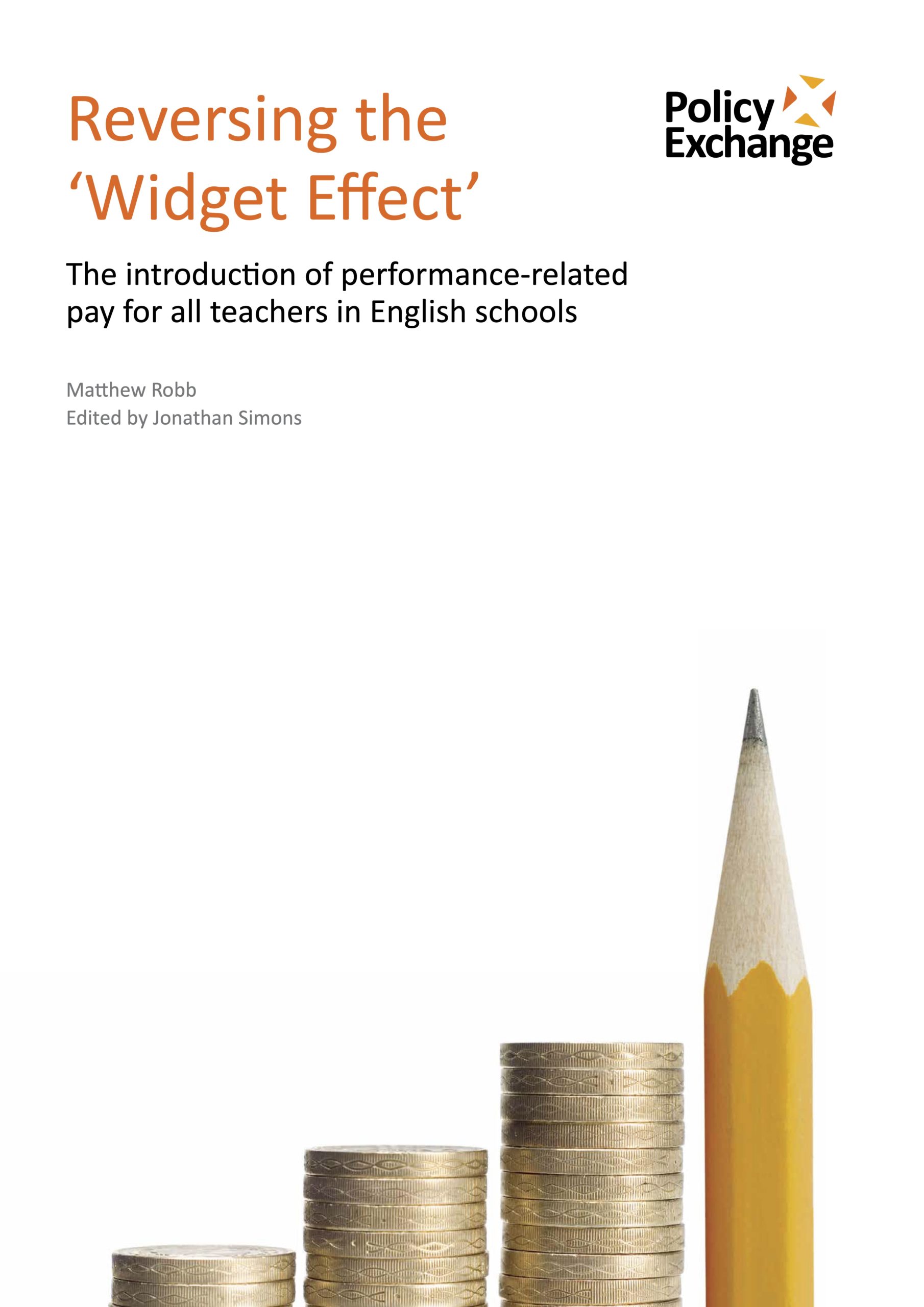
Reversing the ‘Widget Effect’: The introduction of performance-related pay for all teachers in English schools
The introduction of Performance-Related Pay (PRP) into schools in England can improve teaching and learning but it must be fair, transparent and reward real excellence.
The best performing teachers could be paid as much as £70,000 a year within a much quicker time frame and without leaving the classroom under a new pay system that rewards excellence, not simply the length of time a teacher has been working in a school.
Reversing the ‘Widget Effect’ welcomes the government’s introduction of performance pay in schools last September. The report argues that while pay in itself is not the primary motivator for the majority of teachers, the best performing teachers should be rewarded for excellence under a fair and transparent system.
According to the Department for Education, qualified teachers in maintained schools currently earn a minimum of £21,804 (or £27,270 in inner London). Senior teachers can earn up to £64,677 in London and £57,520 outside London while head teachers can reach a salary of between £42,803 and £113,303.
Under a performance-related pay system, rather than a time based system, top teachers would be able to earn as much as £70,000 a year without leaving the classroom within an estimated 5-8 years. The paper says that this could attract more graduates to the profession, driving up the quality of teaching in schools across the country.
The report also found that that despite vocal objections from the unions, most teachers welcome the principle behind it. A YouGov poll for the report found that 89% of teachers want to be paid based on the quality of their teaching. However, the report warns that the system for awarding increases must be fair, and performance-related pay must be used as a real reward for excellence and not a way of holding down the overall pay bill.
The report says that performance-related pay offers three potential benefits:
- To attract and lead to the retention of more high performing graduates into the profession. In the UK there are still only two applicants for every job vacancy, compared to ten in Finland and six in Singapore. Over half of all teachers leave the profession after five years.
- To create a stronger culture of professional development amongst existing teachers.
- For some existing teachers, to incentivise them to improve the quality of their teaching.
However, the findings stress that the system implemented must be fair and transparent. A well-designed system must include:
- An evaluation based on several measures, not just test or exam scores.
- A prolonged evaluation over more than one year to reduce volatility in results and to allow staff to adjust to the new assessments.
- Financial rewards based on increases in base salary, rather than through bonuses.
- The use of performance pay to recruit and retain effective teachers, including the use of Pupil Premium funds to pay for this.
- The use of performance pay not as a way of holding down pay, but as a reward for real excellence. This may require the redesign of teacher pay bands within a school.
Despite many of the objections in principle to performance-related pay, the quality of teaching can be measured, and a well-designed system should not drive perverse incentives nor cause division between teachers. Performance-related pay has been implemented in other countries without adverse effects for teachers or students, most notably in Shanghai, which recently topped the OECD’s PISA 2013 ratings.

